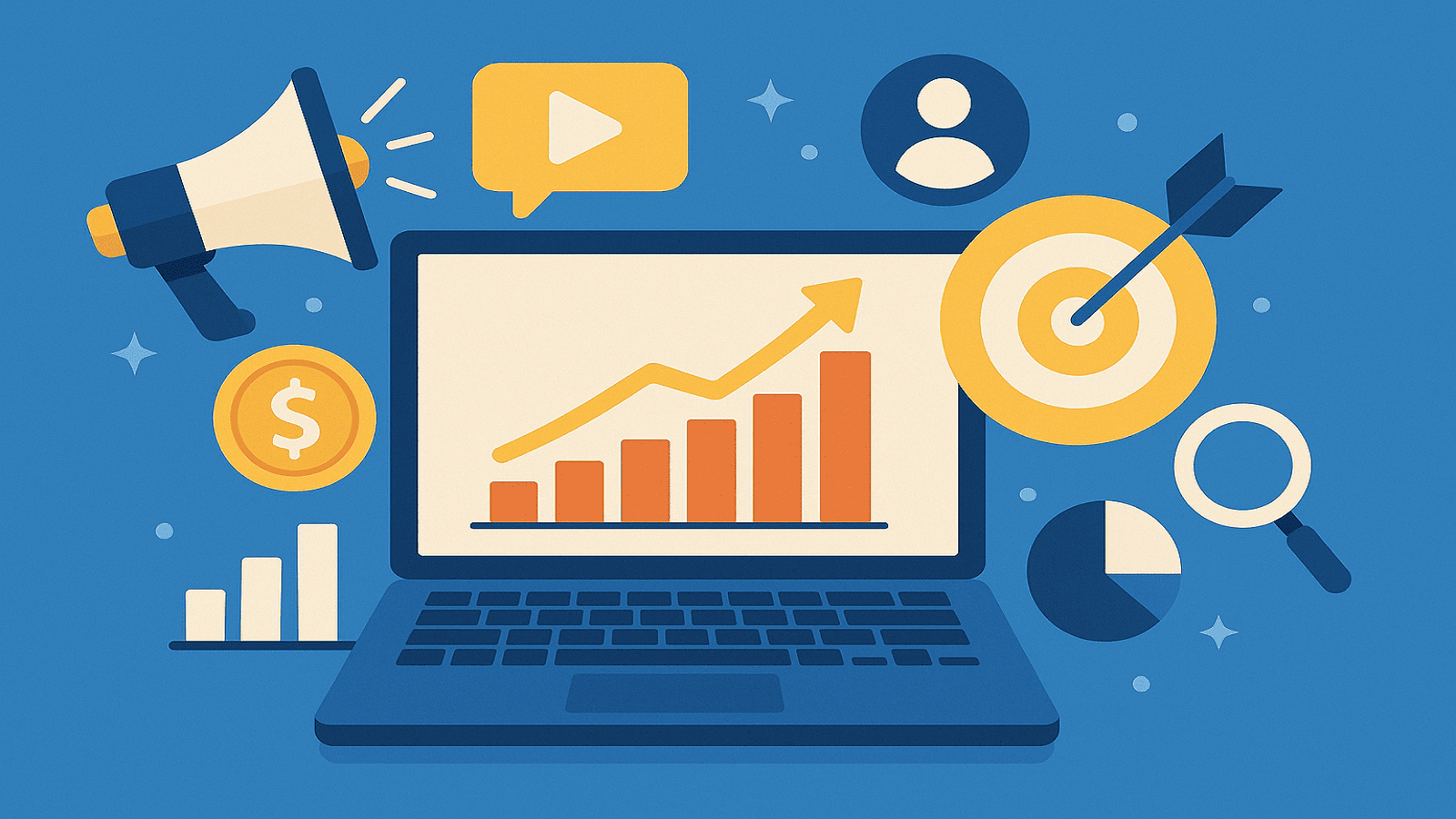Practical Steps to Improve Your Google Ranking
Contents
- The Importance of SEO
- Conducting Keyword Research
- Optimizing Website Content
- Improving Site Speed
- Enhancing User Experience
- Building Backlinks
- Using Social Media
- Performance Analysis & Tracking Results
- Updating Strategies Regularly
The Importance of SEO
Search Engine Optimization (SEO) is a vital process that helps increase a website’s digital visibility. It provides the team in charge of the site with tools and strategies to make its content more discoverable via search engines like Google. This process is essential because the majority of traffic to websites comes from search engines, highlighting the importance of making SEO a core component of digital strategies.
When a site is properly optimized, it can attain a higher ranking in search results, meaning it’s exposed to more of the target audience. That increased exposure leads to more visitors, which in turn boosts engagement and interaction. By optimizing keywords, structuring links, and delivering high-quality content, site owners can improve their position in search results and push their site ahead of competitors.
The benefits of SEO go beyond just driving traffic. SEO can also help build trust and credibility with users. Websites that appear in top ranks are generally perceived as more trustworthy than those buried in lower pages. Moreover, SEO improves user experience—optimized sites tend to load faster and be easier to navigate. Therefore, SEO is not optional but a necessity for achieving digital success. Recognizing SEO as an integral part of a brand’s or company’s marketing strategy is critical.
Conducting Keyword Research
Keyword research is a foundational step in improving your site’s ranking in search engines and must be done carefully to enhance digital performance. The process begins by identifying core keywords that align with your site’s content and target audience. You need to find the terms your potential customers use when searching for your products or services. Tools like Google Keyword Planner or Ahrefs can help in uncovering these keywords.
Once you have your initial keyword list, you should analyze your competitors. That includes checking other sites that rank for your target keywords. Tools like SEMrush or Moz help you observe how these competitors perform and which keywords they rely on. That insight can help you find gaps or opportunities to exploit.
It’s also important to evaluate keywords by search volume and competition. You should strike a balance between highly competitive, high-volume keywords and more niche terms that have less competition but can attract more relevant visitors. Long‑tail keywords are often a good choice because they target more specific queries and tend to yield higher conversion rates.
After completing the keyword analysis, you should have a data-driven list that allows you to optimize your site content and user experience. This analysis will guide your SEO strategy adjustments, leading to more traffic and better rankings in the search results pages.

Optimizing Website Content
Optimizing your website’s content is one of the key steps that can significantly raise its ranking in Google’s search results. The content must be engaging, aligned with visitors’ interests, and SEO‑friendly. To achieve this, use keywords appropriately—this helps Google better understand the page’s topic. Tools such as Google Keyword Planner can help you find the most commonly searched terms relevant to your field.
It’s crucial that the written content is high-quality and truly valuable to visitors. Useful content that meets audience needs—such as articles, blog posts, tutorials—is a major factor in boosting engagement and retention. The content should also be well organized: use subheadings, structured lists, and properly grouped sections to facilitate readability.
Moreover, the content must resonate with visitor interests. This requires understanding your target audience and knowing what they’re searching for. You can use surveys or analytics data to determine audience needs and then tailor content accordingly. Internal and external links are also important: linking to related content improves user experience and encourages Google to crawl more pages of your site.
By optimizing your site’s content in these ways, you can improve your visibility in search results, attract more visitors, and ultimately enhance the site’s overall success.
Improving Site Speed
Site loading speed is a foundational factor that heavily influences user experience and a website’s ranking in Google results. Many studies indicate that users are likely to leave a page if it takes more than three seconds to load. Hence, optimizing site speed is not just a tactic to retain visitors—it’s an integral part of your SEO strategy.
There are several techniques you can apply to improve site speed:
- Image & media optimization: Reduce the size of images and videos without compromising too much on quality. Tools like TinyPNG or ImageOptim can compress images and lower load times.
- Use a Content Delivery Network (CDN): A CDN distributes your site’s content across servers in multiple geographic locations, reducing latency and improving load times for users in different regions.
In addition, reduce the number of HTTP requests by combining CSS and JavaScript files where possible. This helps lower total load time. Also, consider using caching: storing temporary versions of web pages speeds up subsequent loads.
To measure speed, tools like Google PageSpeed Insights or GTmetrix provide comprehensive analysis and point out areas for improvement. Responding quickly to identified speed issues can help improve your site’s ranking and boost visibility.
Enhancing User Experience
User experience (UX) is a major ranking factor in search engines like Google. One effective method is responsive design, ensuring the site adapts to various devices—smartphones, tablets, and desktops. The design must provide a smooth experience, reducing bounce rate and increasing time on site.
Ease of navigation is also critical. Menus should be clear and simple, enabling users to find what they’re after quickly. This not only improves UX but also helps your search ranking. Search engines favor sites that offer excellent user experience, since easier access to information encourages users to stay and engage.
Speed remains crucial in this section—fast-loading pages enhance visitor satisfaction, which leads to better engagement and repeat visits. Avoid large images that slow down load times; make sure all design elements support quick loading.
Finally, UX improvement is not just about design and technical factors—it also means delivering content that meets users’ needs. When a user feels the experience is comfortable and reliable, traffic and engagement climb, positively influencing your site’s ranking in search results.
Building Backlinks
Backlinks (inbound links) are another essential element in improving your site’s ranking on search engines, particularly Google. These links help increase your site’s credibility and authority in the eyes of search engines, boosting chances of appearing in top results. To build high-quality backlinks, adopt effective strategies:
- Identify relevant, authoritative sites: Search for websites in your niche that have good authority. Once identified, reach out to their owners to propose collaboration—either via link exchange or content sharing. Keep outreach emails short and outline mutual benefits.
- Guest blogging: Write articles for other reputable sites in your niche, including a link back to your site within the content. Ensure the guest content is of high quality and contextually relevant to the host site.
Lastly, you must track and monitor backlink performance regularly. Use tools such as Google Analytics or SEMrush to see how those links impact your ranking and visitor traffic. By continually building and maintaining backlinks, you strengthen your site’s authority and position in search results.
Using Social Media
Social media platforms are effective tools for amplifying your SEO strategy and boosting your Google ranking. These platforms broaden your audience and increase awareness of your site’s content, which helps with visibility in search results. By integrating social media into your strategy, you can drive interaction with your audience and motivate them to share your content—this, in turn, boosts your site’s perceived credibility by search engines.
Regular posting is key. Set a posting schedule and stick to it. That keeps your audience engaged and draws them back to your site. Use diverse content formats—articles, images, videos—to attract different audience segments. Using relevant hashtags can also extend reach to wider audiences and increase discoverability.
Engaging with followers is vital. Respond to comments, messages, and discussions. This builds a community around your brand and encourages further traffic to your site. Transparency and openness in interaction can deepen trust and prompt repeated visits.
Also, ensure your social content links back to your website—provide easy pathways for visitors to move from social platforms to your site. That interlinking reinforces your SEO strategy and contributes to improved rankings over time.
Performance Analysis & Tracking Results
Performance analysis and tracking results are essential steps in improving your Google ranking. Using tools like Google Analytics, site owners can understand how visitors interact with their content. This tool allows you to assess key metrics: number of visits, session duration, and bounce rate—insights that help evaluate your site’s overall effectiveness.
To begin, connect your site with Google Analytics so you can track different visitor behaviors. After setup, review data about your most popular landing pages or the ones where users stay longest. This reflects your content’s quality and how well it aligns with visitor needs, helping you identify areas for improvement.
In addition, analyzing traffic sources provides vital information about which channels (organic search, paid ads, social media) are effective in bringing visitors. This helps steer future strategy to increase search visibility. Finally, log changes and monitor their impact on overall performance over time.
Using the right tools to track and analyze data, alongside regular review of your SEO efforts, plays a pivotal role in understanding strengths and weaknesses in your strategy. This enables data-informed decisions that can enhance your site’s performance and ranking in search results.
Updating Strategies Regularly
It is crucial to update your strategies for improving site ranking regularly. Search engine algorithms change frequently, affecting how they rank websites. Therefore, site owners must continuously monitor these changes and make updates to maintain optimal results. This includes revisiting keywords, refreshing page content, and updating both internal and external links.
Refreshing SEO strategies is particularly useful in adapting to shifts in user behavior. As users search for information or services, their expectations for design, speed, and usability evolve. Understanding these preference changes helps you update your strategies accordingly. Regular analytical monitoring is recommended to detect new trends in user behavior, allowing you to adjust your approach based on these changes.
Moreover, have a clear plan to review and evaluate results periodically. This plan might include setting new goals and renewing existing content to boost engagement. Participating in digital communities and specialized groups can also help you stay on top of SEO trends. Through these practices, site owners can ensure sustained success and continuous improvement in their website’s ranking.








No comment